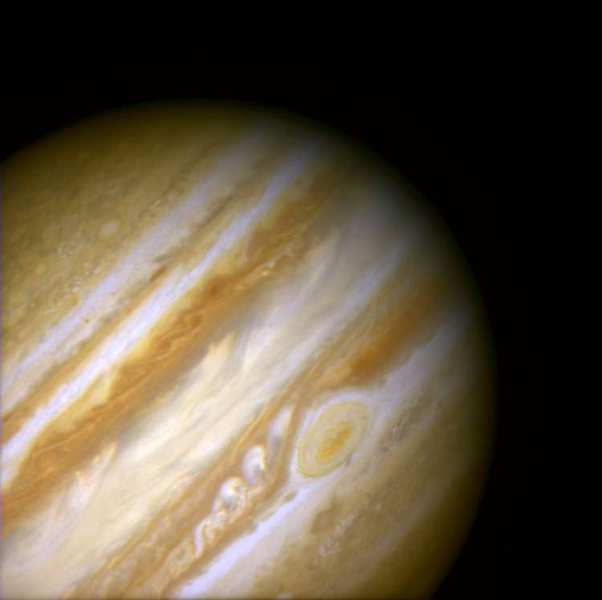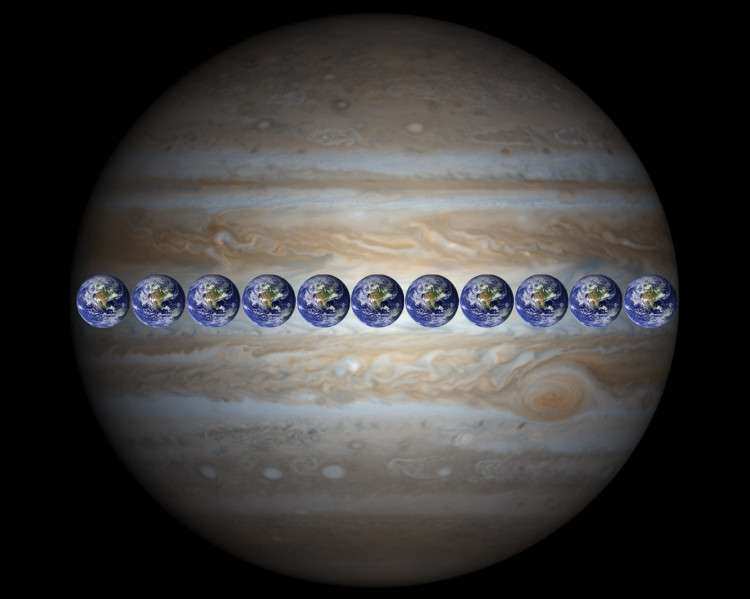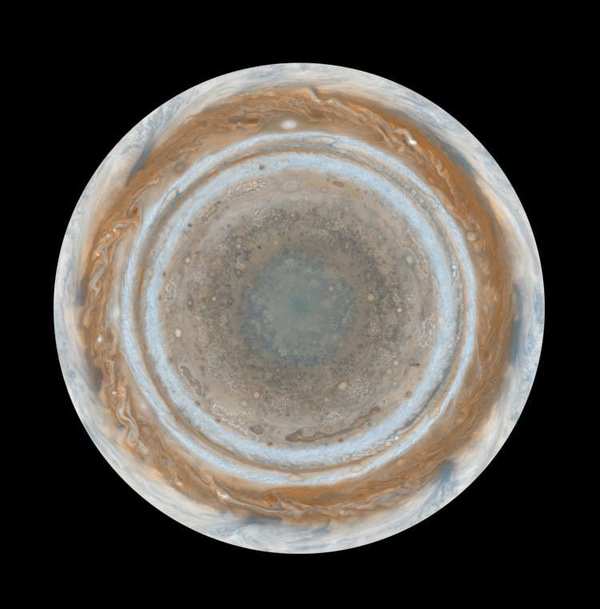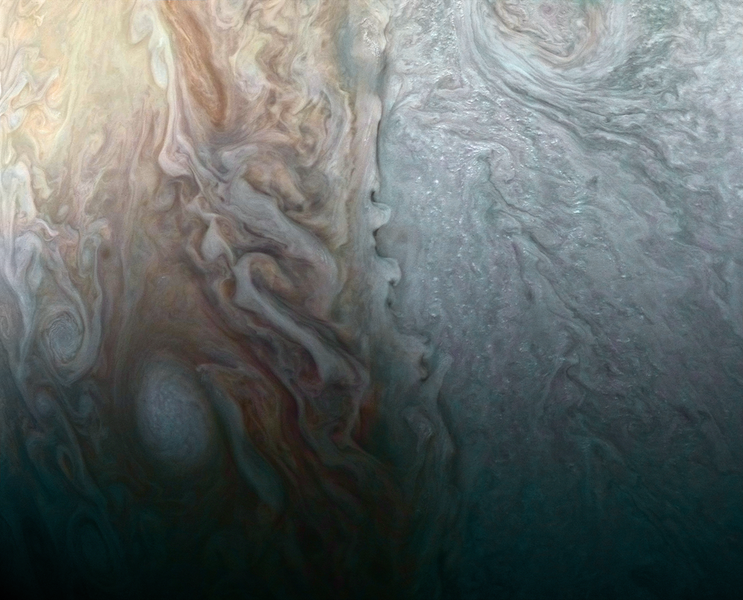|
BY RANDY GENER
JUPITER | How do you take a picture when your spacecraft is spinning? Malin Space Science Systems (MSSS) took on this challenge for the Juno project. JunoCam has a “push-frame” design, like many MSSS cameras, that acquires the image a strip at a time as the spacecraft spins and the earth passes through the field of view.
This image, taken by the JunoCam imager on NASA’s Juno spacecraft, highlights a feature on Jupiter where multiple atmospheric conditions appear to collide.
This publicly selected target is called “STB Spectre.” The ghostly bluish streak across the right half of the image is a long-lived storm, one of the few structures perceptible in these whitened latitudes where the south temperate belt of Jupiter would normally be. The egg-shaped spot on the lower left is where incoming small dark spots make a hairpin turn.

In the post, you’ll find the first images being sent directly from the Juno spacecraft. Juno is carrying a camera, called JunoCam, to Jupiter to acquire the best pictures ever taken of Jupiter’s polar regions. But it has another purpose – to involve the world in planning and processing images, carrying out steps a science team would ordinarily do.
The JunoCam team has planned the earth flyby images, but when we get to Jupiter we will rely on the public’s help to operate the camera.

The planet Jupiter is wide enough to fit 11 Earths across its clouded disk
The image was taken on March 27, 2017, at 2:06 a.m. PDT (5:06 a.m. EDT), as the Juno spacecraft performed a close flyby of Jupiter. When the image was taken, the spacecraft was 7,900 miles (12,700 kilometers) from the planet.
The image was processed by Roman Tkachenko, and the description is from John Rogers, the citizen scientist who identified the point of interest.
JunoCam’s raw images are available for the public to peruse and process into image products at http://www.missionjuno.swri.edu/junocam
More information about Juno is at http://www.nasa.gov/juno and http://missionjuno.swri.edu
Photo Credits | NASA/JPL-Caltech/SwRI/MSSS/ Roman Tkachenko


